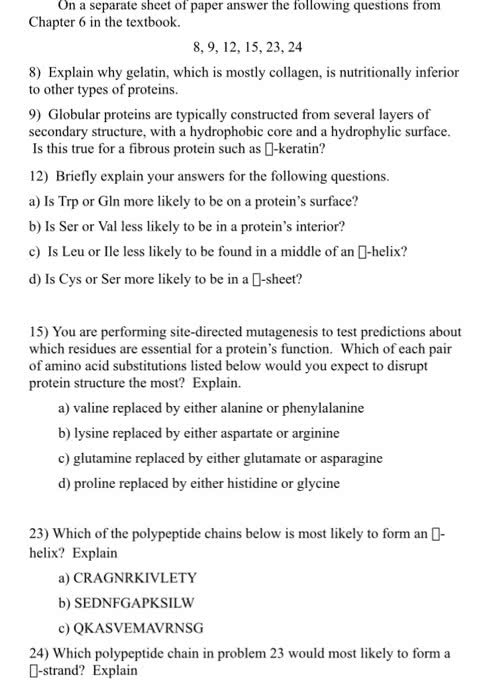1. What is an organic molecule?
2.Name three hydrocarbons and be able to draw their structural formulas.
3. What is an isomer? List and describe the three types (structural, geometric, and enantiomers).
4. Be able to recognize and describe the properties of these functional groups: aldehyde, ketone, hydroxyl, sulfhydryl, carboxyl, amino, and phosphate groups.
5. What is a monosaccharide? Give two examples of these molecules and their functions.
6. Describe these chemical reactions: dehydration synthesis (condensation reaction) and hydrolysis (rehydration).
7. What is a disaccharide? List two and give their functions.
8. What is a polysaccharide? List two storage forms and two structural forms. How are they formed and what is their specific function?
9. How do the pancreatic hormones insulin and glucagon regulate blood sugar levels?
10. What is molting and why is it necessary in certain animals?
11. What four molecules are bonded together to form a triglyceride or fat? Why are fats nonpolar? What are some functions of fats as well as other lipids such as oils and waxes?
12. How do saturated and unsaturated fats differ? Discuss bonding patterns and possible sources of these fats. Which type is healthier for you? Why?
13. Why do animals store most of their excess glucose as fats or oils rather than as glycogen or protein? Give two reasons.
14. What are phospholipids? Identify parts of the phospholipid bilayer that are hydrophobic or hydrophilic? What important cell structure do these molecules help create?
15. Describe the structure of a steroid. How is cholesterol used in beneficial ways in your body?
16. What are LDLs and HDLs? Which is considered good or bad cholesterol? What condition could result from high blood pressure?
17. What are four ways to either reduce high blood cholesterol or maintain a safe level?
18. What is the composition of an amino acid? Why would they be considered nonpolar, polar, acidic, or basic?
19. Define dipeptides and polypeptides.
20. Describe the primary structure of a protein. What type of bonding creates it?
21. What is the secondary structure of a protein? Name two types of secondary structure and indicate what type of bonding holds them together. List three fibrous proteins.
22. What is the tertiary structure of a protein? What types of bonds or chemical interactions allow a protein to maintain this structure? List three globular proteins.
23. What is the quaternary structure of a protein? Describe a hemoglobin molecule.
24. What are the subunits of nucleic acids and what is their composition? How are these subunits bonded together? What is DNS's basic shape?
25. List three differences between DNA and RNA.


